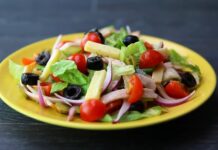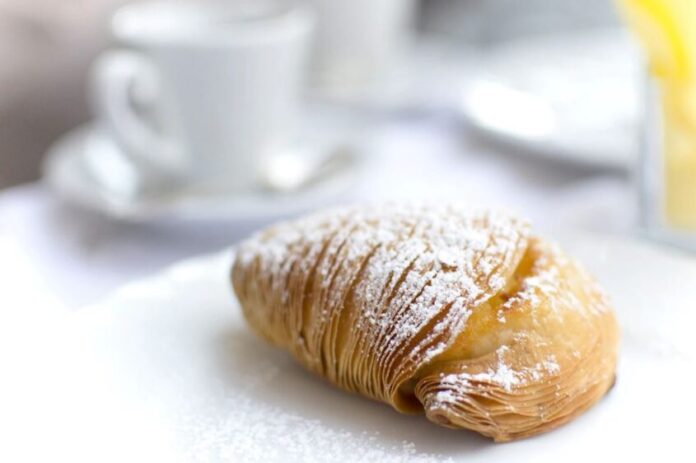
The Origins

Many wonder how it came to the making of this delicious puff pastry. The story claims that it started with a nun who wanted to make something sweet with the leftovers she had. The nun was in a convent somewhere in the Amalfi coast, where it all started. She mixed the leftover semolina, lemon liqueur, sugar, and dried fruit. The mixture was used as a filling and put in the center of the two sheets of dough, which was previously kneaded by the nun. That is how santarosa was made, a sweet pastry, which is very popular in Italy.
The name of the pastry came from the name of the convent in which the first nuns made the sweet treat. Now we get to the part about sfogliatelle. In the 19th century, santarosa made its way to the city of Naples, which is the regional capital of Campania. The pastry’s shape was changed into the triangular lobster tail by a man named Pasquale Pintauro, who owned a pastry shop in Naples. And that is how sfogliatelle was made.
Different Variations of Sfogliatelle
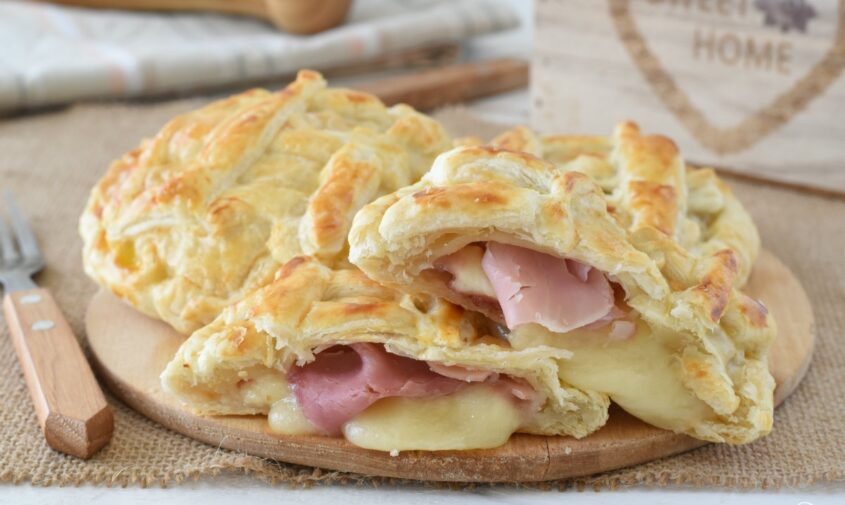
There are two variations of sfogliatelle, most common in the Campania region, and another one outside Italy. The first two are named sfogliatelle riccia and sfogliatelle frolla. The sfogliatelle’s variation outside Italy is known as aragosta or lobster tail, which is very popular in the United States. As it was previously said, there are diverse fillings, such as an almond paste, or a creamy custard with candied peels.
Italians will advise you to eat tagliatelle riccia when it is still hot, as in right out of the oven. The advice comes from the fact that that pastry loses its deliciousness when it cools off. Its filling is made out of a custard-like mixture of semolina, sugar, ricotta, eggs, candied citrus peels, with a hint of cinnamon. The pastry has a clam shape.
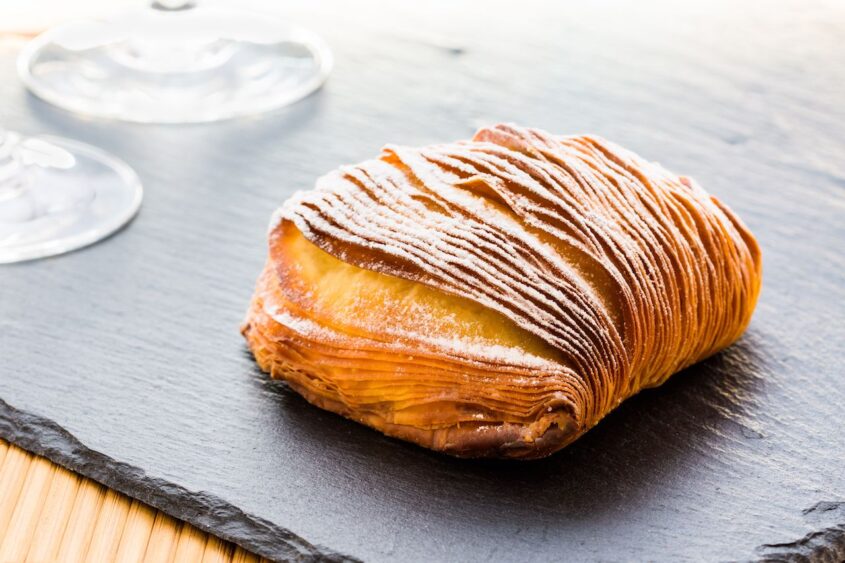
The difference between sfogliatelle riccia and sfogliatelle frolla is in a dough. Sfogliatelle frolla uses a dough called shortcrust, which is mostly used for pies and tarts. The filling remains the same as with sfogliatelle riccia.
The third variation of sfogliatelle is filled with a whipped cream mixture, and it is added after baking. Its dough is similar to sfogliatelle riccia’s dough.
Sfogliatelle Is A Source of Instant Energy
Sfogliatelle is rich in phosphorous and calcium. The first nutrient is good for your metabolism, balances your body’s PH levels, and helps maintain your energy levels. Calcium helps maintain the health of your heart, muscles, and nerves. Both nutrients are essential for maintaining strong and healthy bones.
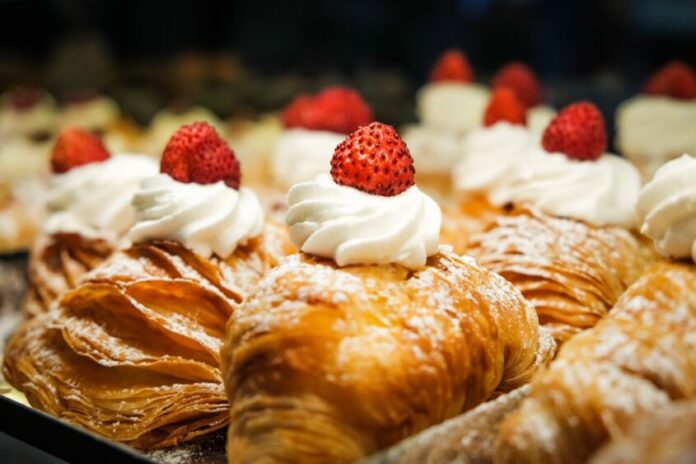
The Recipe
Dough
500 gr flour
1 tbsp salt
175 ml of water
25 gr honey
Filling
450 ml whole milk
100 gr white sugar
1 pinch salt
150 gr semolina flour
500 gr ricotta
1 egg large
1/2 teaspoon vanilla extract
1 pinch cinnamon
50 gr candied orange peel finely chopped
Topping
150 gr unsalted butter or lard
Confectioner’s sugar
Instructions

Mix the flour and salt in a large bowl. Add water and honey to create a stiff dough. Knead the dough until it is smooth, and then wrap and refrigerate it for 30 minutes. After that, split it into 4 pieces, and for each piece repeat the process of rolling through a pasta machine using the widest setting, folding in half, and rolling again, until you get smooth sheets. When the sheets are 1 mm thick, paint them with a layer of lard or butter. Roll the sheet until you have formed a cigar shape, and then roll others around the first one. Wrap that large roll and refrigerate for at least 1 hour.
Put the milk, sugar, and salt in a saucepan and bring to the boil. Add the semolina flour until it thickens and becomes smooth. When it cools off, put it in a bowl and add remaining ingredients for filling. Put in the fridge.
Preheat oven to 180°C.
Cut the chilled pastry into 1 cm slices. Use your fingers, greased with lard or butter, to make an impression on the center to create a cone shape. Scoop some ricotta mixture into the center, filling to the top. Loosely close the shell and lay it on a tray lined with baking paper. Bake for 25–30 minutes, until crisp and golden.



